From fabulous frescoes in Italian churches, to astonishing trompe l’oeil in glorious ancestral halls, murals open windows to new worlds where otherwise there would be nothing but plain old plaster. But you don’t need a castle or cathedral to join the arty party. A growing trend sees murals getting domesticated as your own home becomes the canvas for the wildest flights of fancy.
Murals are having a real moment. Waterford Walls, the annual arts festival that brings street artists from around the world to turn the city into a vast outdoor gallery, has raised the profile of the artform, with Cork's Ardú following suit last year. Meanwhile, artists including Joe Caslin, and signwriters such as Vanessa Power (Signs of Power) have opened people's minds and eyes to what images and lettering can achieve at scale.
While large gable ends obviously offer huge space, you don’t need a massive area for a mural to really work for you. In fact, a well-painted piece can make a small back garden seem enormous, or add a sky’s mood to a poky bedroom.
So where do you start, and how does it all work?
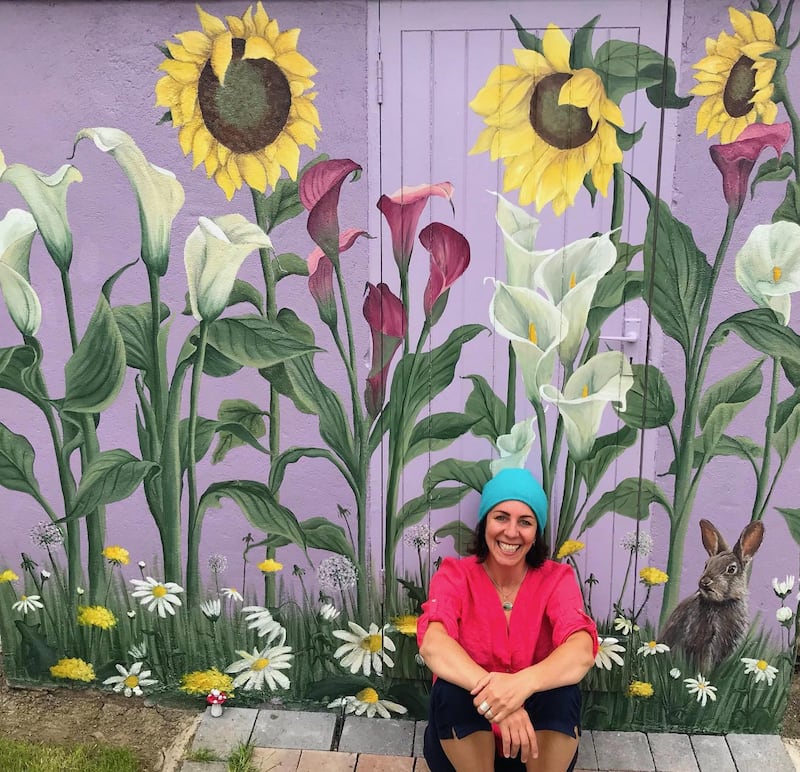
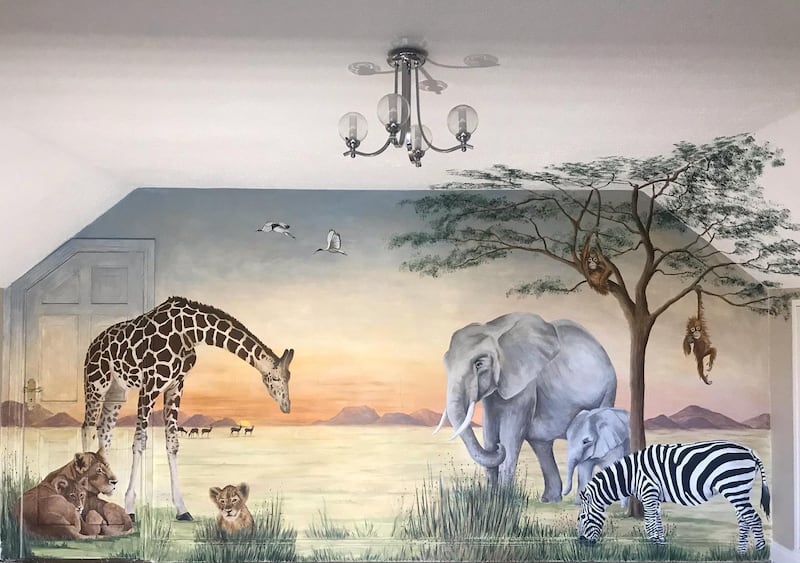
While many younger children risk a hearty telling-off when they apply their crayons to kitchen surfaces, artist Vauney Strahan started her mural-making career by painting on the walls of her family home while still a teenager.
“Mum and Dad were pretty trusting, actually, they kind of gave me free rein to decorate parts of the house that needed a splash of colour,” says Strahan.
It clearly worked, and commissions started to come in, at first via an interior designer and later through word of mouth.
Initially seeing her mural painting as a sideline, the more recent rise in demand has led to it taking over her practice.
“Really, it was just a nixer,” she says of her early days. “It provided a nice change of pace from the seclusion and introversion of my studio work. It’s also a more reliable source of income.”
With a fine art training – at the London Art School, and at Dublin’s IADT – Strahan says she fell into murals by accident. “I think my art history BA [from Trinity] also gave me a good start as it was during those years, while studying gorgeous Renaissance frescoes in college, that I started getting my first mural commissions.”
Choices
From a 30-metre cityscape at the Marker Hotel to a smaller wall painting of a leopard in a Dublin garden that comes in at under 2sq m, Strahan's work demonstrates the range of choice, and she is happy to help clients decide on a piece or work with them to achieve their own vision.
“It varies,” she says. “Some clients have very clear ideas about what they want, while others may have no idea whatsoever. For the latter I usually create a mood board of various types of images and themes that I think might work well within the context of their space.”
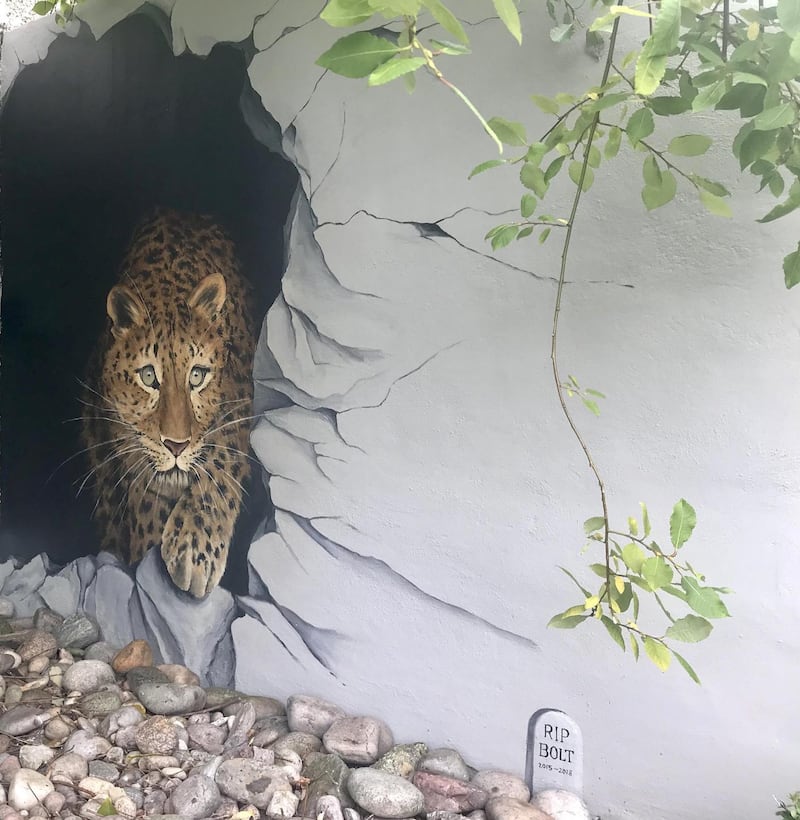
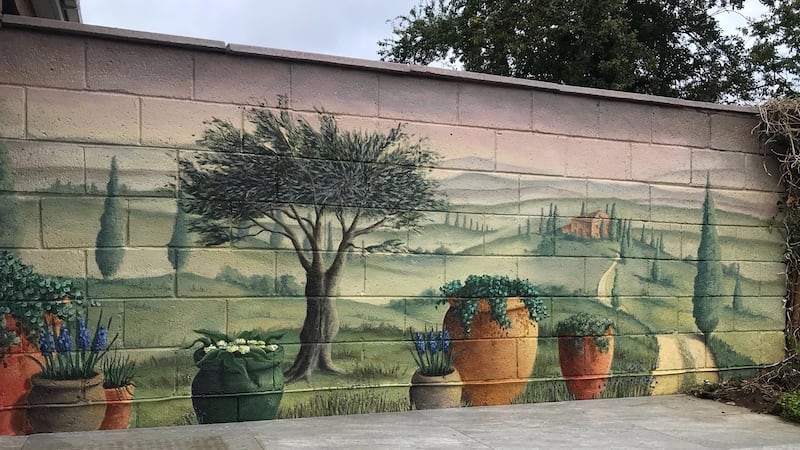
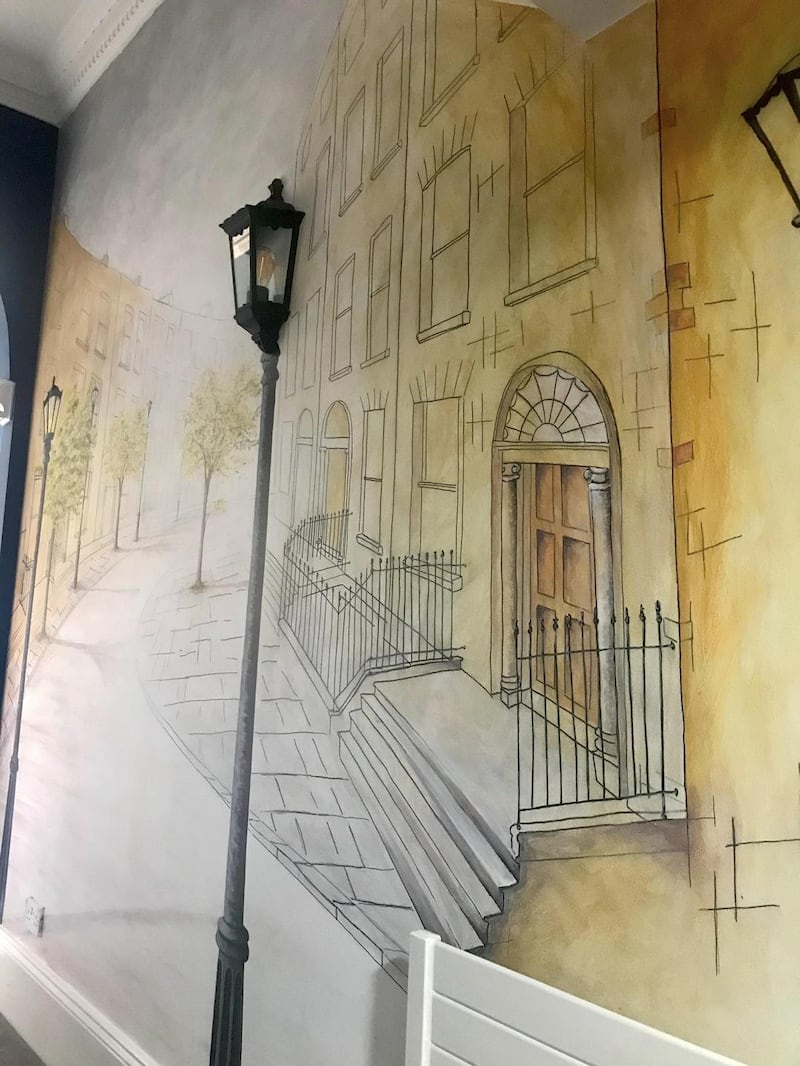
Lively discussions then ensue, to hone in on what will work, and get rid of anything that might ultimately dismay.
“Teasing out what appeals to a client is a part of the process that I really enjoy. I think I get a buzz from it because it is so different from how I operate when I’m working on my studio projects,” says Strahan.
Once that process is concluded you can expect a mural to take anything from two days to two weeks. Strahan estimates an average of three to six days, and quotes a price range from €450 to €2,200.
Fran Halpin also got into mural work as a way of using her creativity to sustain an income after college.
“I wanted to use my talent and looked for alternatives to make a living,” she says. A friend was making a huge mosaic piece for a Dublin bar, and Halpin was tasked with coming up with a design.
“This was my very first job, and it really was a baptism of fire,” she recalls. Working alongside other designers, she was invited to join in on their next job, and things just flowed from there.
Halpin’s own schooling in mural painting sounds like a dream come true.
"I travelled around Ireland, Europe and the US painting bars and restaurants, learning the trade," she says. "One of my favourites was St Lucia. I was painting murals on the outside of a bar while overlooking the Caribbean Sea. It was paradise."
Back home, her pieces range from a huge seascape at Donegal’s Red Castle Hotel to smaller commissions in domestic bathrooms.
Bathrooms
Bathrooms are actually a surprising hot spot for murals. Perhaps the intimacy of the space means people feel they can have a little more fun with their decor. It is also a place where you may make frequent visits, but overall spend less time – which means there’s less jeopardy of getting bored by your new permanent artwork than you might in a livingroom or bedroom. For the mural artist, however, it’s a trickier commission, full of tight spots and painting around pipes.
Like Strahan, Halpin works closely with clients to involve them in the process. Starting with location and size, and following a conversation about ideas, she quickly rules out what they don’t want as a step to arriving at the right design.
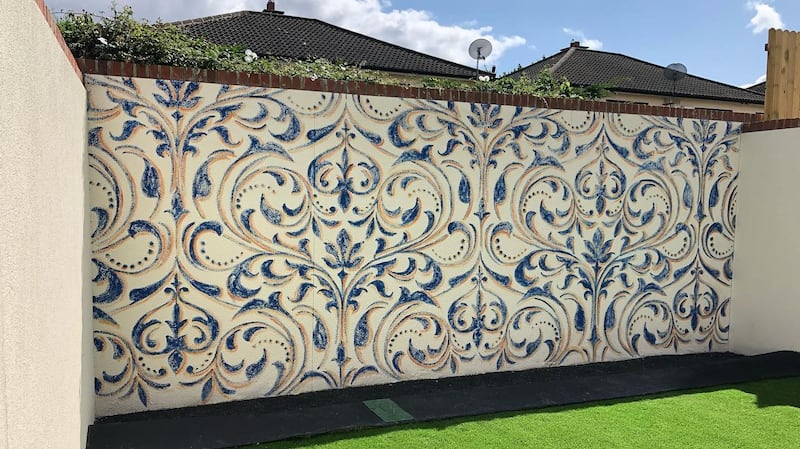
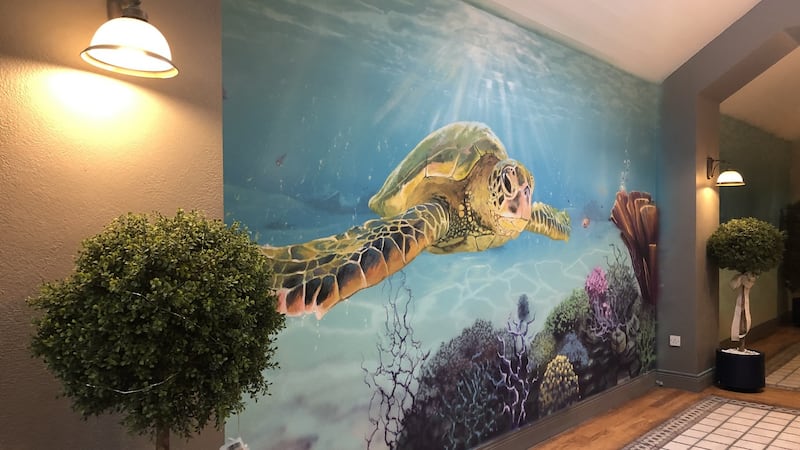
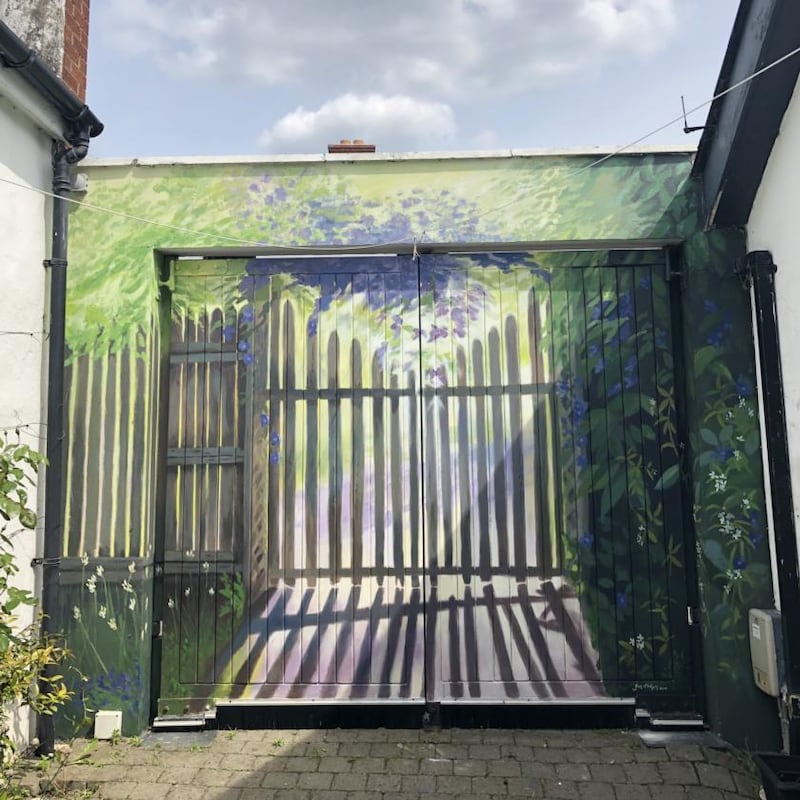
“I recommend saving a Pinterest board with all the things they love,” she says. “It usually reveals a pattern of ideas the client didn’t even realise they liked. People tend to be attracted to the same group of ideas over and over. This helps narrow things down, especially if they are unsure what direction to take the mural.”
Photoshop is also a useful tool, and Halpin will do a mock-up of the design so that people have a full sense of what to expect.
“Most people are looking for some sort of guidance from the artist. I know what will work and what will translate into a good mural,” she concludes.
Halpin’s murals take a few days on site, and she’ll work long hours to make sure she can be in and out as quickly as possible.
“I have spent years learning what works, and lots of time is spent on design so that the process is as painless as possible for the client. If I’m painting a child’s room, for example, you want the least amount of upheaval.”
Costs depend on the final design, and Halpin is adept at tailoring work to meet a client’s budget. Prices for a domestic mural range from €900 to €3,000.
Food for thought for anyone seeking fresh horizons.
vauneystrahan.com frantheartist.com
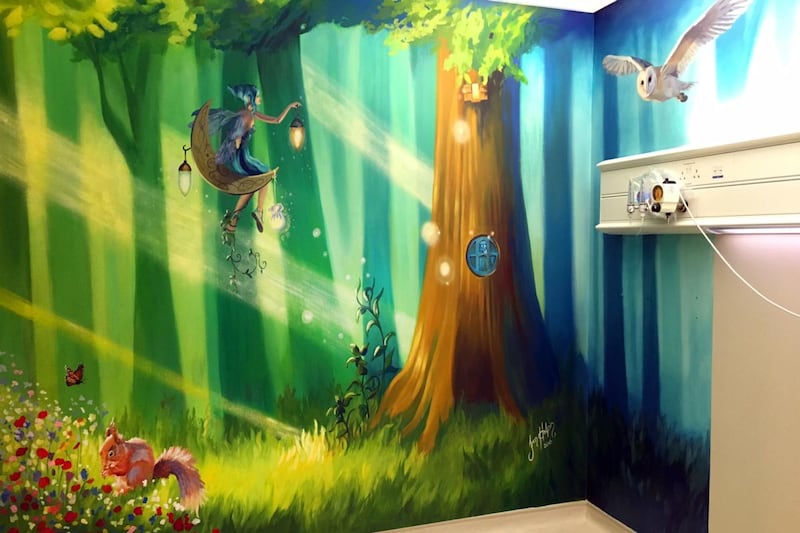
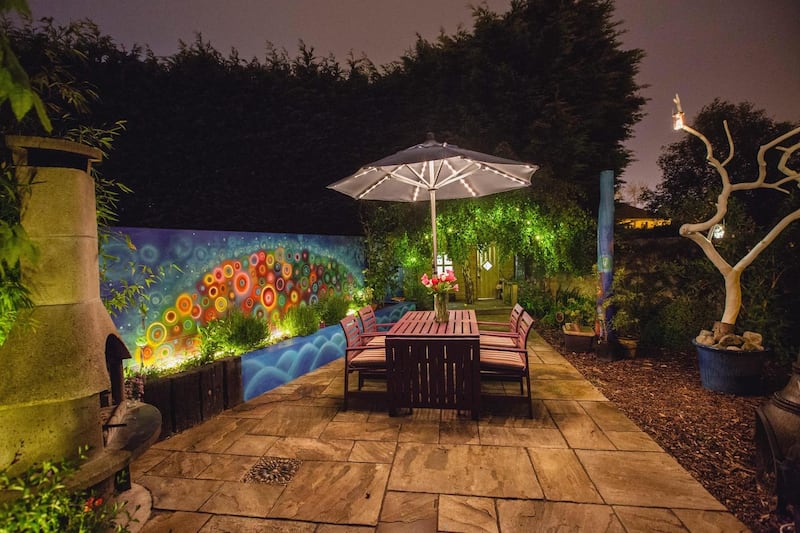
How long will your mural last?
Both Strahan and Halpin use high quality paints and materials to ensure the longevity of their murals. Strahan varnishes hers, using polyvine, which adds a wipeable layer and includes UV filters, while Halpin reserves special varnish for works in hospital settings where they are necessarily subject to more frequent cleaning.
“Most murals are fine without a sealer,” she says. “Exterior murals are done with masonry paint, so this does not need varnish either.”
“Over time a little weathering on a garden mural will be inevitable,” adds Strahan. “But you can really expect a mural to last a good many years without any noticeable deterioration.”











